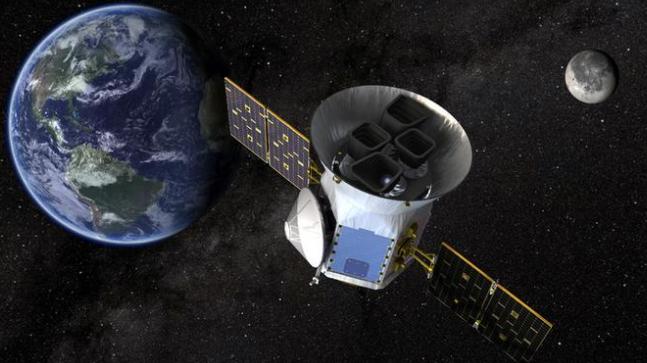NASA's planet-hunter satellite TESS launched on SpaceX rocket
Thu 19 Apr 2018, 19:02:00

NASA's next planet-hunter, the Transiting Exoplanet Survey Satellite (Tess) successfully launched on a SpaceX Falcon 9 rocket from Cape Canaveral Air Force Station in Florida.
The satellite launched at 6.51 p.m. EDT on Wednesday (4.21 a.m. on Thursday, India time).
Tess, which is expected to find thousands of new exoplanets orbiting nearby stars, including some that could support life, was earlier scheduled to launch on Monday (4.02 a.m. on Tuesday, India time) but was rescheduled to conduct further Guidance, Navigation and Control analysis, NASA
said.
Over the course of several weeks, Tess will use six thruster burns to travel in a series of progressively elongated orbits to reach the Moon, which will provide a gravitational assist so that the spacecraft can transfer into its 13.7-day final science orbit around Earth, NASA said.
said.
Over the course of several weeks, Tess will use six thruster burns to travel in a series of progressively elongated orbits to reach the Moon, which will provide a gravitational assist so that the spacecraft can transfer into its 13.7-day final science orbit around Earth, NASA said.
After approximately 60 days of check-out and instrument testing, the spacecraft will begin its work, the US space agency added.
Tess will spend about two years surveying 200,000 of the brightest stars near the sun to search for planets outside our solar systems.
No Comments For This Post, Be first to write a Comment.
Most viewed from International
Most viewed from World
AIMIM News
Latest Urdu News
Most Viewed
May 26, 2020
Who will win The 2025 ICC Women's Cricket World Cup?
Latest Videos View All
Like Us
Home
About Us
Advertise With Us
All Polls
Epaper Archives
Privacy Policy
Contact Us
Download Etemaad App
© 2025 Etemaad Daily News, All Rights Reserved.

.jpg)
.jpg)
.jpg)
.jpg)
.jpg)
.jpg)
.jpg)
.jpg)
.jpg)
.jpg)
.jpg)
.jpg)
.jpg)
.jpg)

.jpg)
.jpg)
.jpg)
.jpg)
.jpg)
.jpg)















.jpg)
.jpg)
.jpg)


